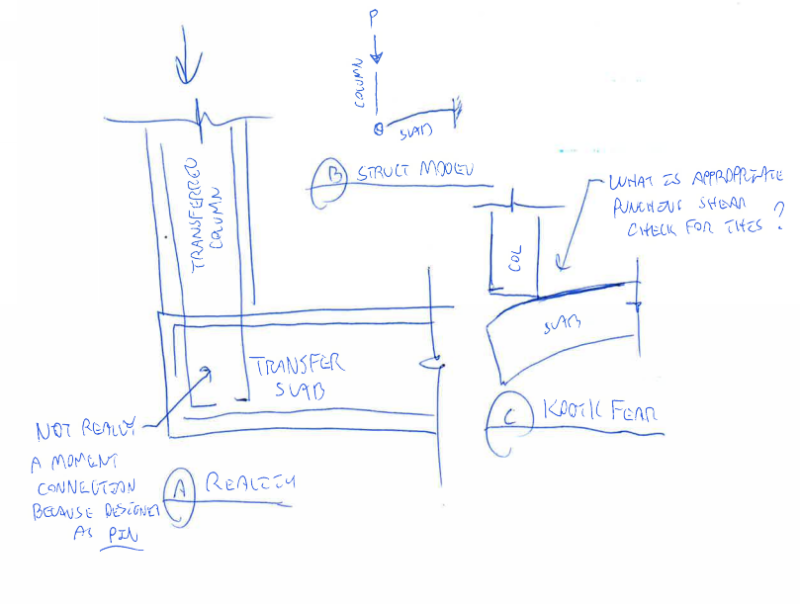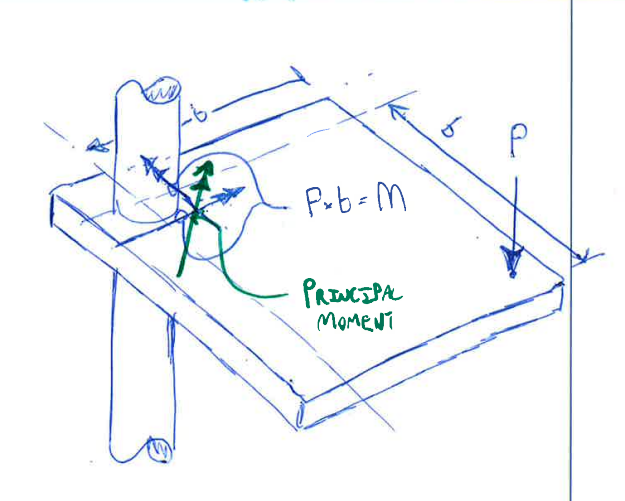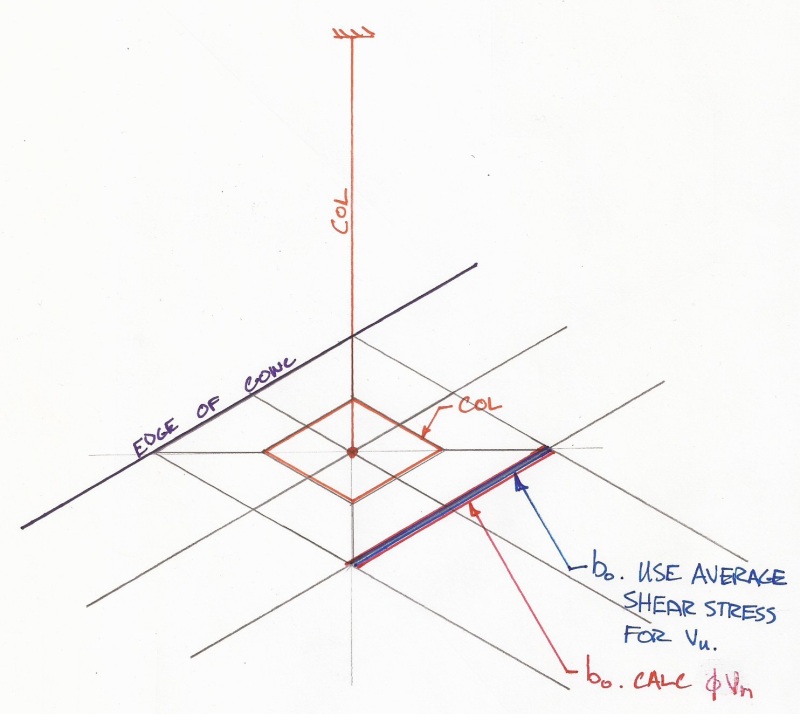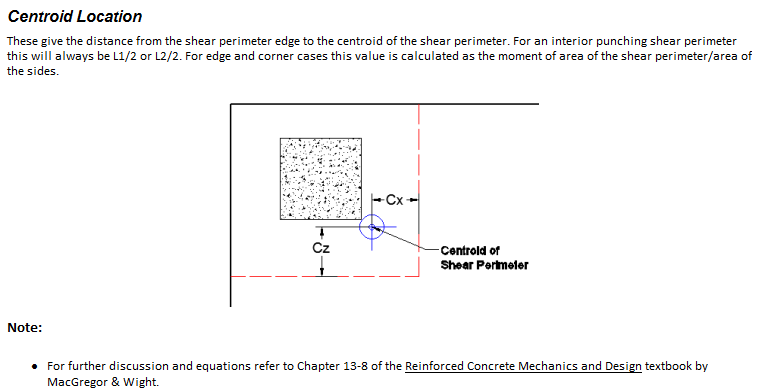Question(s) regarding calculating punching shear capacity per ACI, primarily this is in regards to corner columns:
Is there a clear direction/requirement on how to calculate max stress for corner columns per ACI? I have seen this approached many different ways and have never found a satisfying answer. Looking at 318-11 here but no difference that I know of from previous editions:
- 11.11.7.2 lays out a V/A + M/J procedure for calc'ing max stress. They provide this for an edge condition and state that "similar equations may be developed... for columns located at the corner of a slab". This leaves the accepted procedure at a corner open.
- I have seen many texts and software (SAFE and RAM) which treat corner columns by finding the principal axis and transforming moments to find the M/Jz stress where z is the principal axis.
- I have seen hand calcs that do M/Jx + M/Jy and superimpose the results.
- PCA Notes on 318-11, page 16-15 "where biaxial moment transfer occurs, research has shown that the method for evaluating shear stresses due to moment transfer between slabs and column in R11.11.7.2 is still applicable. There is need to superimpose the shear stresses due to moment transfer in two directions". This is allowing us to check one direction at a time, x and then y.... doesn't seem to be much logic in this other than it possibly has shown to be ok relative to testing.
- From the CSI wiki page for SAFE on "why do results differ from hand calcuations" - "For corner columns, results should differ from ACI and PCA formulation because SAFE incorporates the I23 moment-of-inertia term, leading to more conservative results. We believe this approach to be more theoretically sound." This I23 is the principal axis component mentioned above. SAFE has a white paper where they have verification calcs and show the PCA method vs SAFE.
- Decon, a manufacturer of studrails, has free software - this follows the SAFE approach of finding the principal axis
So I'm seeing 3 general approaches: Check X and Y independently (PCA and maybe ACI?), Superimpose X + Y, Find the principal axis and find M/Iz.
Beyond just being curious this has a very large impact on the results. A corner column in SAFE that has a demand/capacity ratio of 2.0 which would put it beyond even shear reinforcing per ACI. The same condition (same moments, shear, geometry etc) done by X and then Y independently may be well below D/C 1.0 meaning it doesn't need anything. The X + Y approach falls in the middle.
This is a tough sell if I have corner columns that need to be 30x30 for punching shear and the guy down the hall can pull off 16x16.
Am I missing something where this is clarified?
Is there a clear direction/requirement on how to calculate max stress for corner columns per ACI? I have seen this approached many different ways and have never found a satisfying answer. Looking at 318-11 here but no difference that I know of from previous editions:
- 11.11.7.2 lays out a V/A + M/J procedure for calc'ing max stress. They provide this for an edge condition and state that "similar equations may be developed... for columns located at the corner of a slab". This leaves the accepted procedure at a corner open.
- I have seen many texts and software (SAFE and RAM) which treat corner columns by finding the principal axis and transforming moments to find the M/Jz stress where z is the principal axis.
- I have seen hand calcs that do M/Jx + M/Jy and superimpose the results.
- PCA Notes on 318-11, page 16-15 "where biaxial moment transfer occurs, research has shown that the method for evaluating shear stresses due to moment transfer between slabs and column in R11.11.7.2 is still applicable. There is need to superimpose the shear stresses due to moment transfer in two directions". This is allowing us to check one direction at a time, x and then y.... doesn't seem to be much logic in this other than it possibly has shown to be ok relative to testing.
- From the CSI wiki page for SAFE on "why do results differ from hand calcuations" - "For corner columns, results should differ from ACI and PCA formulation because SAFE incorporates the I23 moment-of-inertia term, leading to more conservative results. We believe this approach to be more theoretically sound." This I23 is the principal axis component mentioned above. SAFE has a white paper where they have verification calcs and show the PCA method vs SAFE.
- Decon, a manufacturer of studrails, has free software - this follows the SAFE approach of finding the principal axis
So I'm seeing 3 general approaches: Check X and Y independently (PCA and maybe ACI?), Superimpose X + Y, Find the principal axis and find M/Iz.
Beyond just being curious this has a very large impact on the results. A corner column in SAFE that has a demand/capacity ratio of 2.0 which would put it beyond even shear reinforcing per ACI. The same condition (same moments, shear, geometry etc) done by X and then Y independently may be well below D/C 1.0 meaning it doesn't need anything. The X + Y approach falls in the middle.
This is a tough sell if I have corner columns that need to be 30x30 for punching shear and the guy down the hall can pull off 16x16.
Am I missing something where this is clarified?




